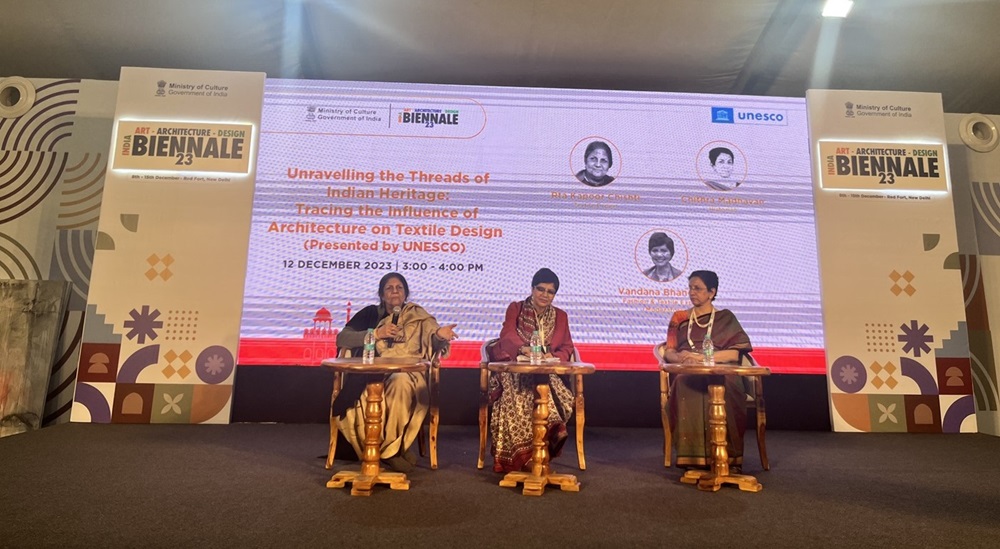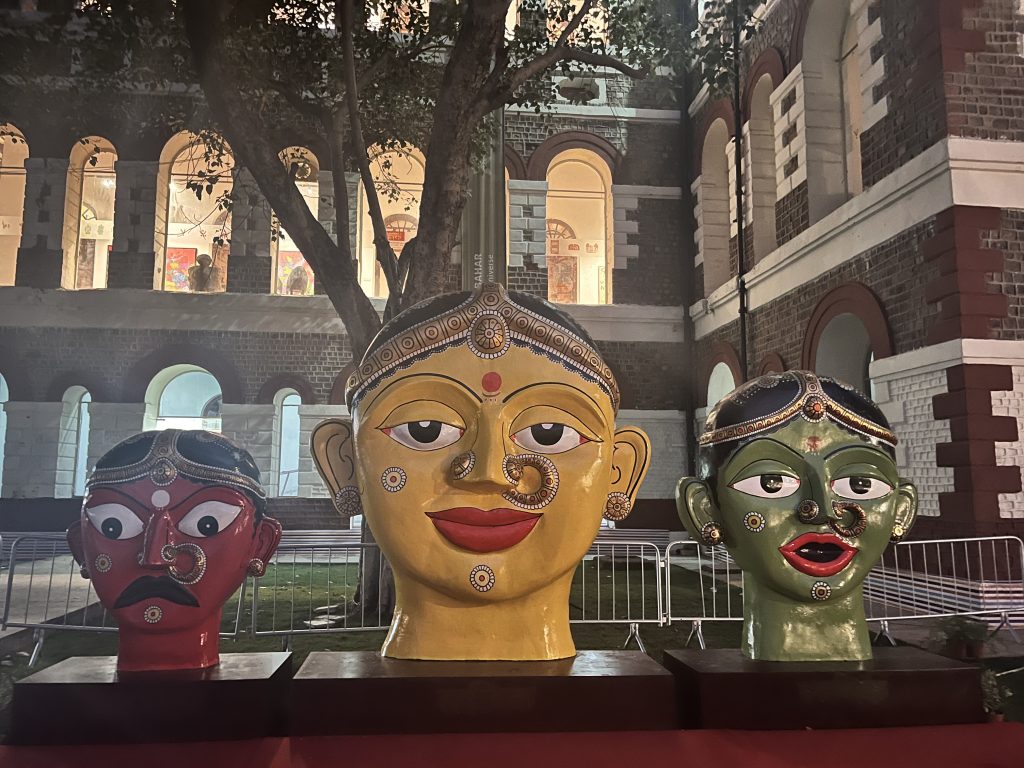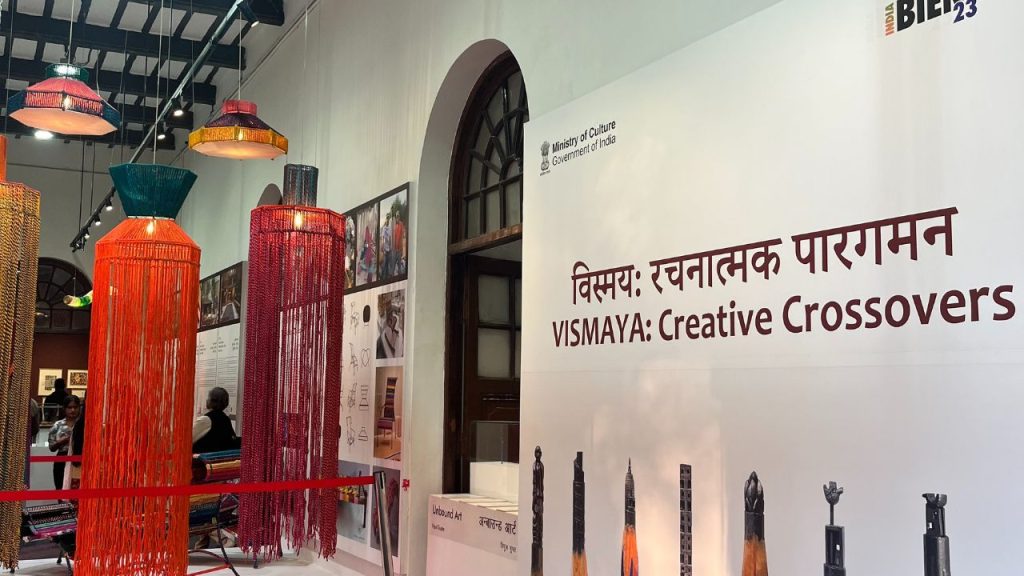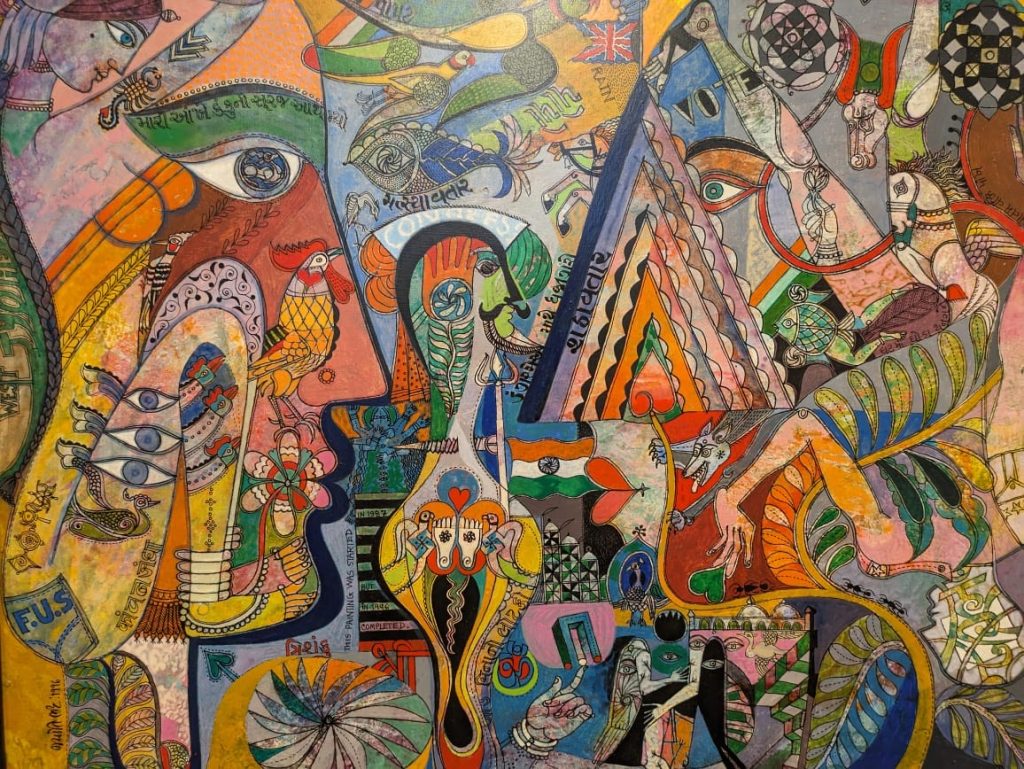The fourth day at the Indian Art, Architecture and Design Biennale was titled, ‘Samatya: Antifragile Algorithm’. It’s based on the different styles of temple architecture in India, and the exhibition has been curated by Amit Pasricha, one of India’s leading photographers.
The exhibition showcases the diversity we have in the architectural forms of our temples across the nation. The display is broken down into four geographies and five elements or Tattvas; that is how Pasricha presents and defines temples to people. Pasricha portrays temples as the centre of society, storehouses, and repositories of culture, religion, and way of life. In his curatorial note, Pasricha says, ‘At the core of Indian civilization is the temple. Over its long and continuous history, this abode of god has shaped, forged, and reforged the multifaceted essence of India across its diverse landscapes. The essence is explored in “Sthapatya: Antifragile Algorithm”.
Four architectural styles—Dravida, Nagara, Vesara, and solitary temple architecture—are the subjects of the section on ‘Temples of India.’ The exhibition highlights temple construction’s rich tradition and skill through a visual journey of pictures, paintings, panoramas, sculptures, lithographs, and electronic displays. Using an elemental lens, it manifests Prithvi, Agni, Jal, Vaayu, and Akasa in perfect equilibrium. The exhibition’s varied themes combine to create a complex tapestry of faith that conveys a deep respect for the temples’ lasting legacy—timeless examples of human ingenuity, versatility, and devotion. While the exhibition is on display till the 31st of March, 2024, the wonderful and rare artefacts borrowed from the National Museum, Delhi, will only be available until Friday, the 15th of December, 2023.
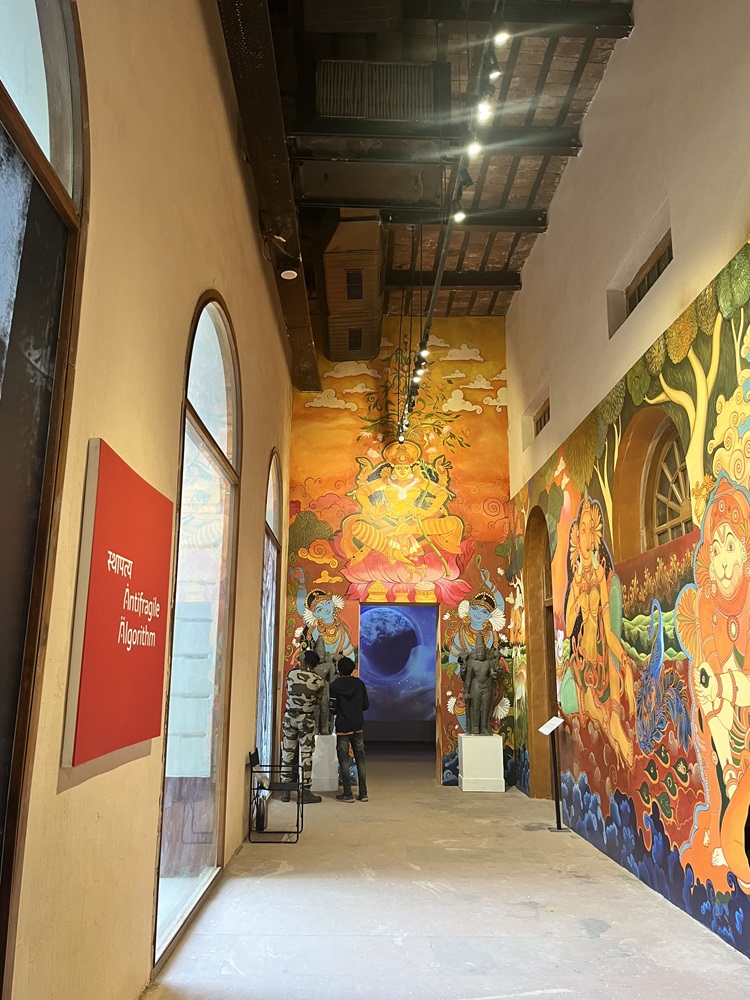
The day had fantastic sessions to go along with the theme and exhibition, starting with the thoughtful and highly informative keynote addresses on temple architecture given by Prof. Naman Ahuja, Art Historian and Professor at the School of Arts and Aesthetics, Jawaharlal Nehru University, and Prof. Crispin Branfoot, Art Historian and senior lecturer at School of Oriental and African Studies, London. Both speakers highlighted India’s rich temple-building tradition from the north to the south.
In the section on South India, we are greeted by a highly brilliant and meticulous artwork, a replica of the Shore temple in Mahabalipuram, Tamil Nadu, by Zakir Khan and his team. The minutely crafted metal replica mirrors not just form but also the temple’s enduring historical and architectural significance. A dedicated scrap metal artist, Khan has devoted a decade to repurposing waste into public art. This replica is made from various metal parts of cycles, motorbikes, etc. This piece is truly a standout from the entire exhibition.
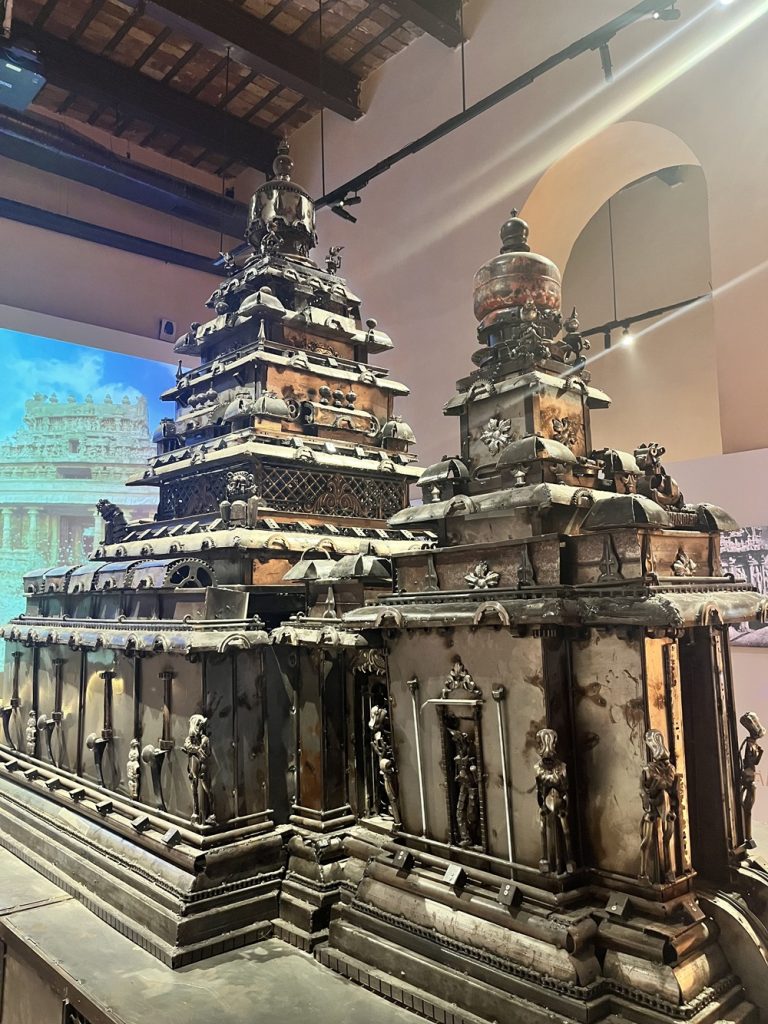
Courtesy: Abir Pothi
The part of the exhibition on majestic temples of southern India, which are embellished with the peculiar Dravida style of architecture, reveals the region’s rich past. The patronage of the great Chalukyas, Pallavas, and Cholas fosters the rich aesthetics and deep historical symbolism of the Dravida style. Tamil Nadu, Karnataka, and Kerala have fascinating stylistic variances due to the regional push behind temple construction. Every temple is distinct in some manner. Dravida architecture gained prominence during the rule of the Cholas, Nayakas, and Vijayanagra Empire empires, which incorporated architectural features such as mandapas, prakaras (enclosing walls), and gopuras (iconic entrances). Interestingly, South India has maintained a continuous practice and unbroken tradition of building temples from the sixth century CE to the present.
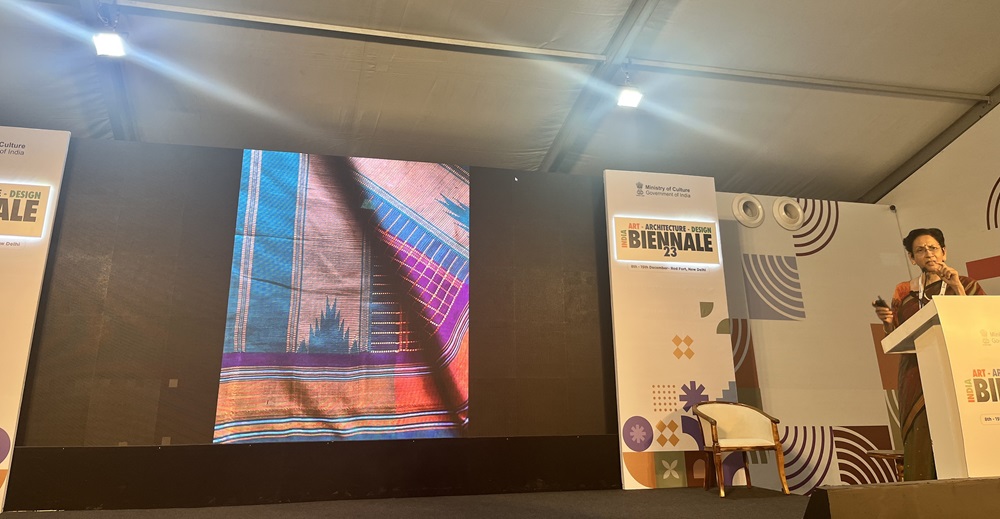
Courtesy: Abir Pothi
The following session was a lecture cum presentation made by the two speakers, Rta Kapoor Chisti, author and textile expert, and Chitra Madhavan, historian and author, followed by a panel discussion with the two moderated seamlessly by Vandana Bhandhari, fashion and textile expert and professor. Bhandari talked about how temple architecture has influenced Indian textiles, whether weaving, dying or embroidery. Craftspeople in India have over a thousand years of experience in taking and borrowing from the motifs seen in architecture and sculpture. So much of what is happening around these artisans shows up on cloth. The culture of India is diverse, and we know that India and its people provide some of the most striking and colourful sites.
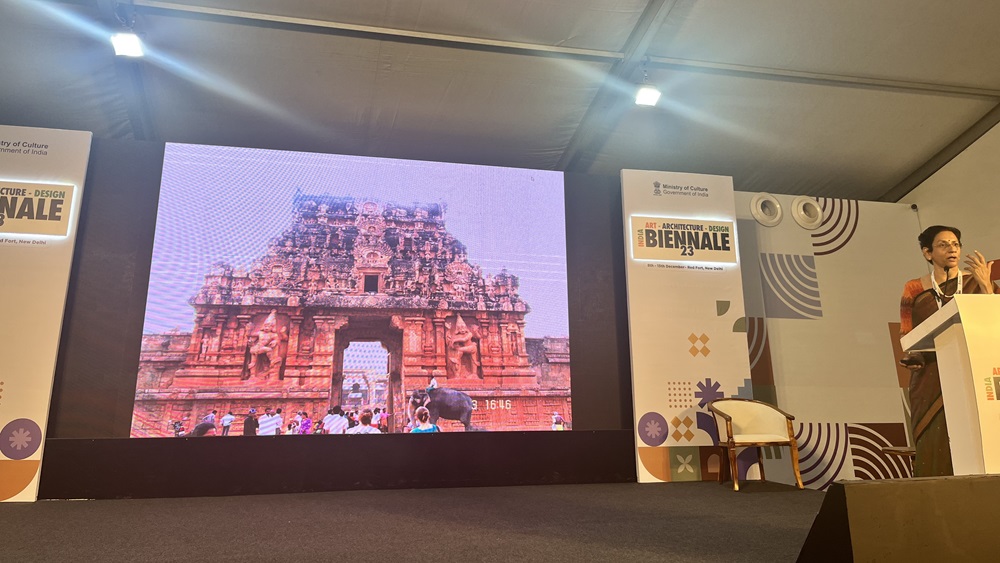
Courtesy: Abir Pothi
Day 2 was about baaghs, bahaars and gulistans at the IAADB’23
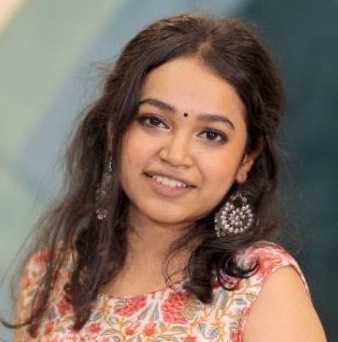
Anoushkha Prasad is a post-graduate from the School of Arts and Aesthetics, J.N.U. She is currently working as a researcher and writer.

